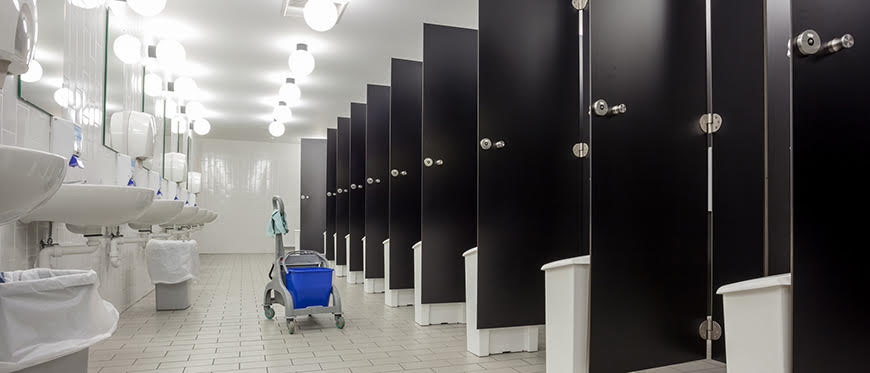Health departments are crying foul over some less-than-sanitary conditions prevalent at athletic venues. An ESPN special report found that at 28 percent of all the major league stadiums in North America, foodservice operations had been cited for critical or major health violations.
While it’s obviously difficult to ensure complete cleanliness when serving thousands of customers at a time, it’s not just the big leagues with big hygiene problems. For instance, fitness facility operators have been warned that unsanitary conditions could lead to members contracting and spreading the dangerous MRSA staph infection.
Whatever its size or focus, the health of your athletic facility, and of your business overall, depends on protecting the health of your customers and workers. Today, forward-thinking operators are combining common sense measures with innovative products to make sure their facilities are clean, safe and thoroughly enjoyable. Here are just a few best practices in hygiene that every athletic facility should observe:
1. Master your plan
 Whether you’ve got a couple million square feet of stadium to keep clean, or “just” a couple of gyms and locker rooms, having a cleaning plan thought out and written down is your critical first step. Include a detailed, regular schedule, keeping in mind that cleaning less often can actually cost you more, especially when it comes to customer’s satisfaction (a cleaning industry survey discovered that bathroom cleanliness is at the top of overall customer requirements). Clearly spell out what is to be done, when, and how – this will help ensure consistency and compliance, even with the inevitable turnover in your workforce.
Whether you’ve got a couple million square feet of stadium to keep clean, or “just” a couple of gyms and locker rooms, having a cleaning plan thought out and written down is your critical first step. Include a detailed, regular schedule, keeping in mind that cleaning less often can actually cost you more, especially when it comes to customer’s satisfaction (a cleaning industry survey discovered that bathroom cleanliness is at the top of overall customer requirements). Clearly spell out what is to be done, when, and how – this will help ensure consistency and compliance, even with the inevitable turnover in your workforce.
2. Don’t just clean – clean green
It’s not enough to make your facility cleaner and safer – your customers expect you to do that while keeping the environment clean and safe, too. In fact, 61% of consumers expect businesses to lead the way in sustainable practices and the use of earth-friendly products and processes. This can be as simple as using recycled paper products, or as involved as large-scale composting.
Take the example of Mets Stadium in New York City. The maintenance team there collects 1000 tons of trash annually, nearly half of which gets recycled. They’ve even gone so far as to install an advanced composting capability that processes 150 tons of trash each year.
3. Get smart, right down to the bathroom
The term “smart facilities” may conjure images of sensors that count crowds, or apps that let individual fans interact with a game. But getting smart should extend throughout your venue, including the humble restroom. New technologies – like hand towel dispensers you can monitor from a desktop dashboard – are helping boost facility cleanliness while reducing cleaning-staff time.
4. Involve and educate vendors, workers and customers
Facility management should not, however, go it alone when it comes to making the most of sustainable cleaning practices. Because of high-consumer interest in all things eco-friendly, facility managers can turn to their green providers to not only supply goods, but also underwrite sponsorships. These can be especially valuable when supporting education initiatives, whether though simple signage and training materials, or in more engaging programs that get customers involved (like the Mets Stadium program that gets tailgaters to help clean up the parking lot and even to recycle).
The downsides to dirty facilities are all too obvious, while the opportunities to “clean up” in the marketplace are often less so. By being more aware of, involved with and creative about both cleanliness and sustainability, your athletic facility can come out the big winner.
SOURCES:
The Stanford Social Innovation Review: Cultivating the Green Consumer
ESPN: What’s Lurking in Your Stadium Food?
Green Sports Alliance: Greener Cleaning Playbook
Athletic Business: A Clean Facility Means Good Hygiene
Business Cleanliness Key to Customer Satisfaction Sustainable Brand Forum
